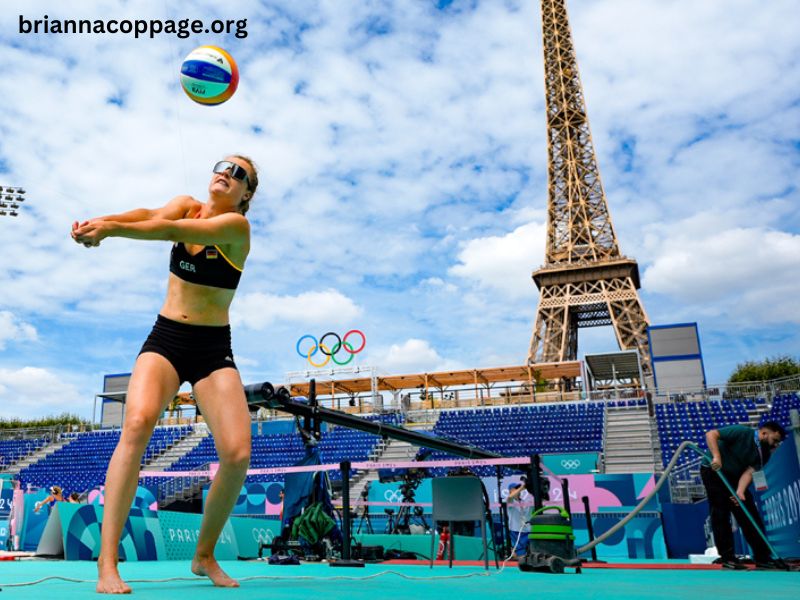The Summer Olympics, held every four years, is a grand celebration of athletic prowess, cultural exchange, and international unity. With a rich history dating back to ancient Greece, the modern iteration began in 1896 and has since evolved into a global spectacle featuring a wide range of sports. As of the latest editions, the Summer Olympics encompass a diverse array of competitions that showcase the talents of athletes from around the world. This article will explore the various sports included in the Summer Olympics, their histories, formats, and what makes each unique.
1. Athletics
Athletics, often considered the centerpiece of the Summer Olympics, encompasses a range of events including running, jumping, and throwing disciplines. The track and field events are the most prominent, featuring sprints, middle-distance, and long-distance races, along with hurdles and relays. Field events include high jump, long jump, shot put, and discus throw. Athletics has a storied history, with its roots in ancient competitions and has produced legendary athletes like Usain Bolt and Jesse Owens.
2. Swimming
Swimming has been part of the Olympics since the first modern Games in 1896. Events range from sprints to long-distance races in various strokes: freestyle, backstroke, breaststroke, and butterfly. Relays and individual medley events further add to the excitement. The swimming competitions are often held in a pool, with athletes like Michael Phelps and Katie Ledecky achieving unprecedented success, making swimming one of the most watched sports.
3. Gymnastics
Gymnastics features a range of disciplines, including artistic gymnastics, rhythmic gymnastics, and trampoline. Artistic gymnastics is perhaps the most well-known, involving events like the vault, bars, beam, and floor exercise. Rhythmic gymnastics combines elements of ballet, gymnastics, and dance, while trampoline gymnastics showcases aerial acrobatics. Gymnastics requires a unique blend of strength, flexibility, and precision, captivating audiences with its grace and athleticism.
4. Team Sports
The Summer Olympics includes several team sports, promoting camaraderie and collaboration. Notable team sports include:
- Basketball: Introduced in 1936, basketball features both men’s and women’s competitions, showcasing top players from around the world.
- Soccer (Football): A global phenomenon, soccer has been part of the Olympics since 1900 and includes both men’s and women’s tournaments.
- Volleyball: Both indoor and beach volleyball are Olympic events. Indoor volleyball debuted in 1964, while beach volleyball was added in 1996.
- Hockey: Field hockey has been an Olympic sport since 1908, featuring intense matches and tactical gameplay.
These sports highlight teamwork and strategy, drawing passionate fan bases.
5. Combat Sports
The Olympics features several combat sports, emphasizing skill, strength, and strategy. These include:
- Boxing: A traditional Olympic sport since 1904, boxing matches are contested in various weight classes.
- Wrestling: Wrestling has two main styles in the Olympics: Greco-Roman and freestyle. It has a long history, dating back to ancient Greece.
- Judo: This Japanese martial art emphasizes throws and holds, having been introduced to the Olympics in 1964.
- Taekwondo: A Korean martial art that focuses on high, fast kicks, taekwondo became an Olympic sport in 2000.
These sports not only test physical prowess but also mental agility.
6. Water Sports
Water sports have a significant presence in the Summer Olympics, showcasing athletes’ abilities in various aquatic disciplines:
- Rowing: Rowing events include single and team competitions in different boat classes. The sport is steeped in tradition and requires immense teamwork and endurance.
- Canoeing and Kayaking: These events include sprint and slalom disciplines, challenging athletes’ speed and maneuverability.
- Sailing: Various classes of boats compete in sailing events, testing navigational skill and teamwork.
- Diving: Athletes perform acrobatic feats from various heights, with judges scoring their precision and difficulty.
Each of these sports celebrates athletes’ relationships with water and showcases a range of skills.
7. Cycling
Cycling is a multifaceted sport at the Olympics, with several disciplines:
- Road Cycling: This includes individual time trials and mass-start races on public roads, testing endurance and strategy.
- Track Cycling: Conducted on a velodrome, this fast-paced event features sprints, pursuits, and team races.
- Mountain Biking: An exhilarating off-road discipline, mountain biking races challenge athletes on rugged terrain.
- BMX Racing: This event showcases high-speed racing on a specially designed track with jumps and obstacles.
Cycling emphasizes speed, strategy, and technical skill.
8. Shooting and Archery
Shooting sports test precision and focus, featuring various disciplines like rifle, pistol, and shotgun events. Athletes compete in both individual and team formats, with competitions occurring at different distances and target sizes. Archery, another ancient sport, was included in the Olympics in 1900, requiring a steady hand and sharp focus as archers aim at targets from increasing distances.
9. Modern Pentathlon
The modern pentathlon, introduced in the 1912 Olympics, is a unique event that combines five different disciplines: fencing, swimming, equestrian show jumping, and a combined event of running and shooting. This challenging format tests a wide range of skills and athleticism, making it one of the most demanding Olympic events.
10. Other Sports
The Summer Olympics features a variety of other sports that add to the overall diversity of the Games:
- Weightlifting: Athletes compete in different weight classes, attempting to lift the heaviest weights possible in two lifts: the snatch and the clean and jerk.
- Golf: Returning to the Olympics in 2016 after a long absence, golf allows for individual and team competitions.
- Rugby Sevens: A faster-paced version of rugby, rugby sevens features teams of seven players competing in shorter matches.
- Skateboarding: Included in the 2020 Olympics, skateboarding showcases athletes’ creativity and technical skills in a competitive format.
The Evolution of Olympic Sports
Over the years, the Olympic program has evolved to reflect changes in society, culture, and interests. New sports are regularly added, and existing ones may undergo changes in format or scoring. The inclusion of sports like skateboarding, surfing, and sport climbing in recent Olympics demonstrates a commitment to engaging younger audiences and celebrating contemporary athleticism.
Conclusion
The Summer Olympics stands as a testament to human achievement and the spirit of competition. With a wide array of sports, each with its own history and traditions, the Games offer something for everyone. Whether you are drawn to the speed of athletics, the grace of gymnastics, or the teamwork of team sports, the Olympics showcase the pinnacle of athletic talent and determination.
As we look ahead to future Olympic Games, the excitement of discovering new talents, witnessing extraordinary performances, and celebrating the unity of nations continues to inspire millions around the globe. The Summer Olympics remains a vibrant stage for athletic excellence and cultural exchange, a true celebration of the human spirit.






